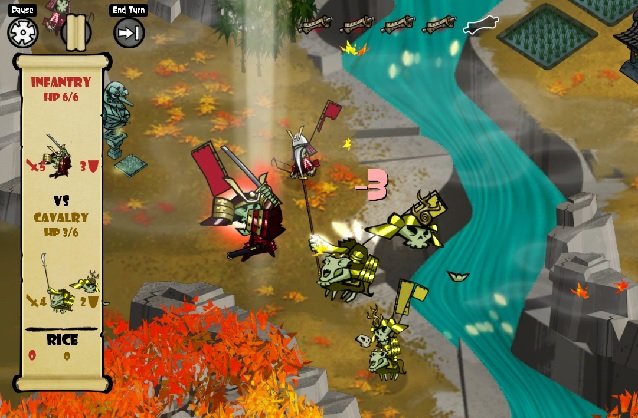

The new generation of consoles has been kind to Madden. While the PS4 and Xbox One version of last fall’s Madden NFL 25 only features slightly upgraded visuals from its last-gen counterparts, its significant gameplay improvements won over hardened football fans. Less than a year later, Madden 15 arrives as a more ambitious effort. There are significant modifications in key areas--analytic data and play-calling among them--that bring a more modern feel to Madden even though they border on information overload. An impressively spruced-up presentation combined with further refinements of the core gameplay results in steady progress for the better--and a really fun game of football most of the time.
Analytics are all the rage in real-world sports these days, and Madden 15 delivers them in a big way. Information is presented to you in real time, and much of it takes place as you’re walking towards the line of scrimmage. A nifty right stick-driven analysis module allows you to judge matchups and check tendencies before you snap the ball, giving you actionable data about potential success points or risky choices. If the right side of your line is struggling to block an overpowering defensive lineman, you’ll know this immediately and can make adjustments; conversely, if your slot receiver has a big speed advantage against a defender, you can tinker with his route and exploit that weakness. Even if you’re just observing, the coaching tool becomes a go-to feature every play. The effect is immediate and positive, as you learn to make sense of what’s presented then employ tactics based on the feedback.
When the whistle is blown, Madden serves up the plays called by the offense and defense so you can determine what worked or failed. This information may seem trivial, but it's vitally important to players yearning to understand how to be more successful. It puts powerful information in your hands; if your opponent is calling the same few defensive plays over and over again, you’ll know and can then plot a counter-attack. Opponent strategies are laid bare--just as they are to observant coaches in the real-world NFL--and your success ultimately comes down to your ability to call the right plays and executing them properly.
Longtime Madden veterans definitely have their work cut out for them in the play-calling department, as the new menu system for selecting your personnel and strategy takes some time to process, especially when analytics are served up at the same time. Madden is more intent than ever on making play recommendations, and now that it backs them up with quantitative reasons for its suggestions, it feels like you’re the head coach watching an offensive or defensive coordinator sending in the plays. It’s very easy let Madden pick every play for you, and veterans of the series may resent the need to do more work to drill down into formations and specific calls. Conversely, newcomers are given a much clearer idea of what may be a good idea to run and why. Regardless, the navigation here is a drastic change from a decade-old template. It's easy to read because the visuals are extremely large and in your face, but a more toned-down approach would have made the system feel less busy.
Offensive tempo is another big part of modern football, and the most welcome improvement to play-calling comes in the form of new settings that let you tweak the pace of your games. Madden NFL 15 features two Tempo toggles--‘No Huddle’ and ‘Chew Clock’ (in addition to the default of ‘Normal’). ‘No Huddle’ makes your offense get to the line quickly and forces the defense to do the same, while ‘Chew Clock’ automatically brings the play clock down to 10 seconds as you break the huddle. There are clear advantages and disadvantages to both settings. If you go no huddle and speed up the pace, you can wear down defenses and catch them off guard. However, you can’t change your personnel while doing so, and are limited in the variety of plays you can call. On the other hand, chewing the clock eliminates those awkward late-game “just standing around to kill time” moments everyone hates. The downside is the defense gets time to rest and there are precious few seconds to make any adjustments. These nifty additions are easy to turn on and off as the situation changes, and add a good deal of strategy to every drive.
Of course, analytics and play-calling improvements aren’t worth much if the core gameplay doesn't hold its own. Fortunately, Madden builds on its new-gen debut. The offensive and defensive line play continues to improve, as your ability to find running lanes and hit them feels true-to-life. Momentum and physics prevent your ability to slash and cut into holes as quickly as you may like, but they resemble how real players move and react. Running up the middle seems a bit easier this season, and it’s definitely tougher to net those big yards on outside tosses and stretch runs.
Passing remains a challenge, however. Interceptions are still too prevalent, especially in some one-on-one situations where receivers don't fight for the ball and corners have too much of an advantage. This can be counterbalanced, of course; it just takes practice and impeccable timing to consistently complete throws. There are times when you’ll swear you made the pass at the right moment to an open receiver only to be foiled by a linebacker or defensive back. Simply put, Madden gives no quarter to sloppy passes--you will be punished for mistakes.




 Dragon Age Inquisition Guide: How to Pick the Best Companions
Dragon Age Inquisition Guide: How to Pick the Best Companions The Road to Final Fantasy XIV: Heavensward
The Road to Final Fantasy XIV: Heavensward How to get Resident Evil Revelations 2 Now That's Teamwork! Trophy / Achievement
How to get Resident Evil Revelations 2 Now That's Teamwork! Trophy / Achievement Starbound – Beta Beginner’s Guide
Starbound – Beta Beginner’s Guide Skulls of the Shogun: Bone-A-Fide Edition Review: Loose Strategy with Adorable Undead
Skulls of the Shogun: Bone-A-Fide Edition Review: Loose Strategy with Adorable Undead